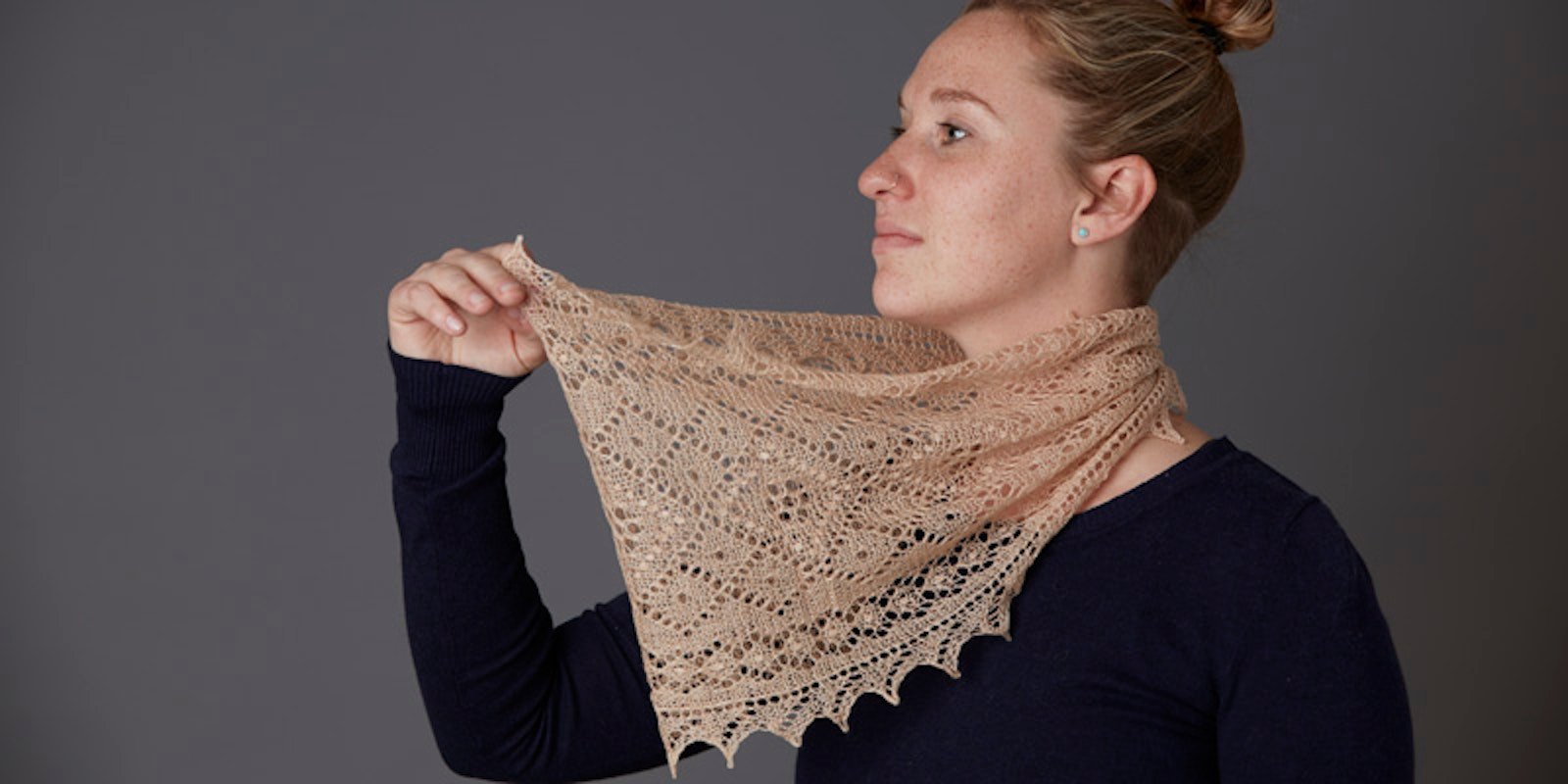The eternal allure of lace captivates needleworkers from around the world. The making of this ethereal textile may vary, but the result always fascinates. Orenburg lace is a perennial favorite at PieceWork. Daunted by the magnitude of knitting a full shawl, but still want to give Orenburg lace a try? Look no further than our Silky Camel Cowl, and learn how to knit flies!
The Silky Camel Cowl adds a touch of elegance to any outfit.
The Silky Camel Cowl
The Silky Camel Cowl designed by Inna Voltchkova incorporates four traditional Orenburg-style lace motifs—Beaded Way, Strawberry, Honeycomb, and Flies. The central panel is predominately the Beaded Way motif bordered by the Strawberry motif with a Flies motif at the center of each diamond. A central diamond is created with the Flies motif, which surrounds the Honeycomb motif. Beaded Way, Strawberry, and Honeycomb motifs are all lace patterns that combine yarnovers and decreases.
Flies Motif
What is the Flies motif? A stitch similar in structure to an Estonian nupp, the Flies motif is created by increasing one stitch into five, and on the returning row, knitting the five stitches together. This may sound difficult to maneuver on a pair of knitting needles, but with a couple of tips they will be a breeze.
Detail of the Flies motif, which creates a large diamond that surrounds the Honeycomb motif. Photos by George Boe.
Flies Motif Tips
- Use knitting needles with sharp, long, tapered points which are made for lace knitting.
- When making the one stitch into five [(k1, yo) 2 times, k1], work stitches very loosely.
- To make sure that the stitches are loose enough, slide the tip of the left needle into them and give a little wiggle.
- On the return row, knit the five stitches together adding another little wiggle to loosen the stitches.
With practice, you will be knitting Orenburg-style lace!
Download a copy of PieceWork’s November/December 2016 issue—a celebration of all things silk and cast on an Orenburg-inspired Silky Camel Cowl.
Happy knitting! Elizabeth



